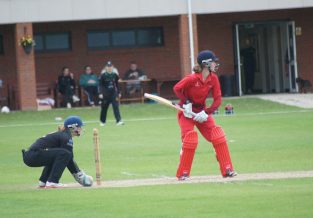Footy Finals – The Hard Yards Are Yet To Come!
Published on
29 Sep 2015

Call us on: (03) 9975 4133
The break between the regular football season and the start of the preseason is an important time of the year. Not only is it the perfect time to sit back and have a few beers, it is also the ideal time to get those niggling injuries addressed. Many players will carry injuries throughout the year, and simply resting for a month or so will most likely not be enough to prevent them from returning worse the next season.
Depending on the injury, having a period where you are not required to train twice a week and play on the weekend gives you a great opportunity to address specific strength deficits or biomechanical insufficiencies. These would usually be too hard to get on top of in-season, meaning the off-season is the ideal time to crack down on some uninterrupted rehab or ‘prehab’ for the following season.
Common Niggles In-Season
Tendon Pain
Classic areas of tendon pain include the achilles, patella and hamstring. If you have suffered from persistent or variable pain in these tendons during the season, chances are the symptoms may subside with a period of rest. However, if you do not appropriately stress and strengthen the muscle tendon complex, you can guarantee the pain will probably come back worse when you commence preseason training. Going from a period of relatively little load (off-season) to high load (getting smashed with running sessions in the summer heat) is something the tendon complex will not like, and will most likely become irritated again. It is important to keep the tendons under some load during the off-season, so there is not such a jump in overall load. For example, go for an easy jog 1-2 x week or do some cross training. If you couple this with an appropriate strength program you will be well on your way to reducing your likelihood of tendon pain during the next season.
Hip and Groin Pain
Pain in the pelvic and hip area is something players often write off as ‘its not that bad, I will just get through the season and rest up’. Hip and groin pain is one of the big three injury categories in in the AFL, with the others being hamstring strains and knee injuries. The multifactorial and dynamic nature of football, with high-speed change of direction running, forceful contact and kicking all have a large impact on the hips and pelvis, more so than other less complex sports. If you have experienced ongoing hip and groin pain, chances are you may be suffering from a number of different conditions, including hip impingement and associated labral damage, some form of bone stress or ‘otitis pubis’, adductor related pain or even a sports hernia.
If left untreated, this can fast track joint arthritis and early joint replacement. This is not to say everyone with some hip pain needs surgery, but they most certainly need a tailored exercise program to enhance strength and control around the hips and pelvis that is specific to their sport or activity.
Hamstring Strains
Hamstring strains are still the number one injury in terms of both incidence and prevalence (missed games) in the AFL. It seems the risk of injuring your hamstring is significantly increased if you have injured it previously, and/or you are past your early twenties. Perhaps you have injured your hamstring throughout the year, even if you got back to play some games, you are still at a higher risk of reinjuring it (and perhaps worse) the next season. The period at the end of the season is an ideal time to address your hamstrings strength and overall condition. But more importantly, assess your running and movement patterns that could be contributing to hamstring overload, for example poor glute function or reduced lower back mobility.
Tips
In summary, don’t think by just having a month off your injuries won’t be back bigger and more painful the next season.
- Be active throughout the off-season
- Listen to your body, don’t ignore or push through the pain
- Get your movement and niggles assessed
- Build a specific ‘prehab’ program that you can complete 3-5 x a week during the off-season
- Set some goals for the off-season
- Enjoy the beers and a well earned break


